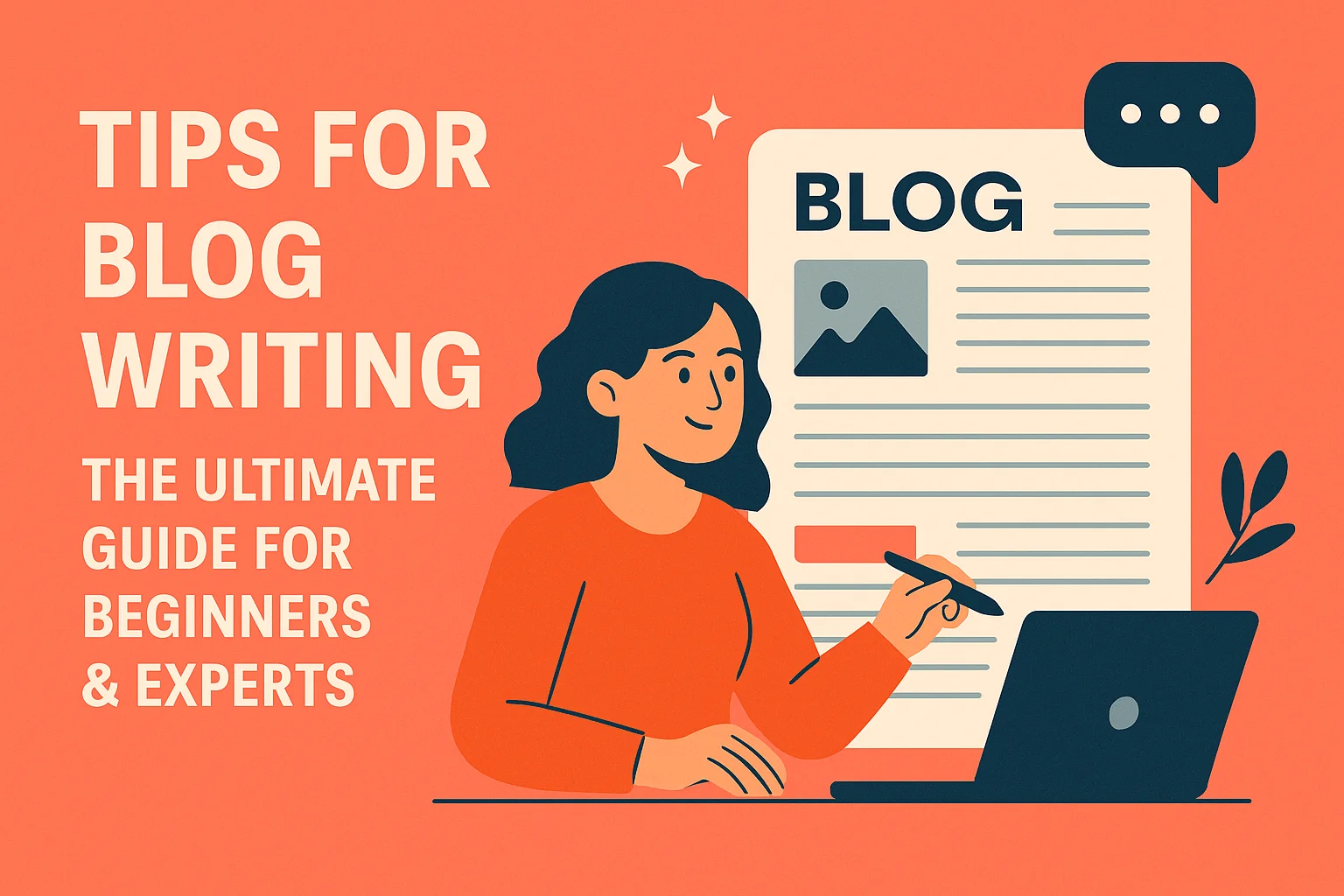If you’re struggling to craft impactful blog posts or wondering how successful bloggers consistently create engaging, high-ranking content, this guide is designed for you.
Packed with tips for blog writing that align with current SEO practices and content trends, it gives you the tools to write blog posts that inform, convert, and connect.
Whether you’re learning how to start the blog or looking to refine your content strategy as an experienced writer, the insights here will take you from idea generation to promotion with clarity and confidence.
You’ll discover what it truly takes to write a blog post that doesn’t just “exist” on your site but delivers value to your audience and your long-term goals.
From identifying the right topics and structuring your post to optimizing for search engines and encouraging reader interaction, this guide is built to serve both beginners and seasoned content creators.
Every section you read moves you closer to mastering writing content that works across all platforms—from personal blogs to business websites.
Table Of Contents
Why Blog Writing Is More Than Just Words

In the ever-evolving digital landscape of 2025, blog writing has become far more than just placing words on a screen.
It’s a deliberate and strategic form of content creation that blends creativity, structure, and optimization to serve both the reader and the search engine.
A well-written blog post isn’t just informative—it’s a powerful asset in your content marketing arsenal.
At its core, blog writing helps build visibility, authority, and trust.
It improves SEO, drives organic traffic, and nurtures a deeper connection with your audience.
Whether promoting a product, growing a personal brand, or educating a niche audience, a blog allows you to create long-form content that matches user intent while boosting your site’s search engine ranking.
For beginners, though, getting started can feel overwhelming.
Common questions often include:
- How do I create blog content that’s both engaging and optimized?
- What’s the right way to structure a blog post?
- Why does writing feel so time-consuming and difficult to maintain?
These are challenges every new blogger faces—this is where proven blog writing tips for beginners come into play.
By aligning your writing with reader expectations and search engine signals, you can overcome writer’s block, formatting confusion, and inconsistent tone.
This guide will walk you through the core strategies and techniques that separate high-performing blogs from those that go unread.
Whether you’re just getting started or refining your process, these insights will help you build blogs that confidently convert, inform, and grow your digital presence.
Step 1 – Build a Smart Content Strategy Before You Write

The planning phase is one of the most overlooked aspects of successful blog writing.
Before you begin typing your first word, building a content strategy that aligns with your blog’s purpose, audience expectations, and long-term goals is essential.
A strong strategy improves content relevance and helps maintain consistency, structure, and discoverability across every post you create.
Effective content planning sets the foundation for better headlines, more engaging writing, and posts that rank.
If your blog feels disconnected or you’re unsure what to write next, chances are you skipped this critical step.
Here’s how to fix that.
1. Choose a Blog Niche That Aligns With Your Goals
Start by selecting a niche that reflects both your expertise and the needs of your intended readers.
Choosing a focused niche helps establish topic relevance, ensures content consistency, and builds authority within a specific field.
For example, writing across unrelated topics like personal finance, cooking, and tech reviews under one blog can confuse both your audience and search engines.
Instead, aim to stick with one domain of knowledge and go deep. This clarity forms the core of your content strategy, making it easier to develop themes, pillar content, and interlinked topic clusters.
A defined niche also improves audience engagement because readers know what to expect, and you can better meet their search intent.
2. Research Your Target Audience
Understanding who you’re writing for is as important as the writing itself. Good blog writing begins with empathy.
Ask: What is my reader struggling with? What questions are they asking that I can answer?
To uncover this, explore places where real conversations happen:
- Google Search’s “People Also Ask” section
- Reddit communities focused on your niche.
- Quora discussions around your topic
- AnswerThePublic for a visual map of commonly searched queries
You can tailor your content directly to their needs by listening to what people are asking.
This drives audience engagement and increases the likelihood of ranking for long-tail keywords with lower competition.
3. Analyze Competitors and Identify Content Gaps
Look at the blogs that are already ranking for your intended topics.
Tools like Ahrefs, SEMrush, or even simple manual search queries can reveal:
- What formats perform well in your niche (guides, how-tos, list posts)
- Which blog posts are bringing traffic to competitors
- What’s missing that you can cover better or from a fresh angle
By identifying content gaps, you can position your blog to stand out—not by copying what already exists, but by offering deeper value or a more user-friendly approach.
Competitor analysis isn’t just for advanced bloggers. Even beginners can benefit from understanding where their content fits in the landscape.
It helps you avoid redundant topics and focus on areas with real opportunity.
4. Build a Bank of Blog Ideas
Once you’ve chosen your niche and studied your audience and competition, the next step is to build an idea bank.
This keeps you from scrambling for topics at the last minute and ensures you always have content in the pipeline.
Use:
- Google Keyword Planner for search volume insight
- AnswerThePublic for long-tail variations
- Google Trends to identify what’s rising in your niche
- People Also Ask to mine highly relevant user questions.
Having a content queue also supports your editorial calendar and maintains consistency.
Remember, consistent publishing signals freshness and reliability to search engines.
When your ideas are based on real demand and keyword research, every post becomes a strategic move—not just content for content’s sake.
This phase is especially crucial if you’re seeking creative blog writing ideas or just starting and looking for tips for making a blog that gains traction.
Step 2 – Plan Your Blog Post Like a Professional Writer

While creativity plays a key role in blogging, consistency and structure turn a casual post into a high-performing one.
Before writing a single sentence, professional bloggers follow a system that saves time, improves clarity, and aligns content with user expectations and search engine needs.
By planning—through content structure, keyword research, and post type selection—, you can write faster while producing higher-quality work that supports your SEO and long-term content goals.
This step ensures your blog is not only readable but also discoverable.
1. Choose the Right Blog Post Type for Your Topic
Different types of blog content serve various purposes.
How you structure a blog post should depend on your audience’s intent and the topic’s complexity.
Here are some common formats:
- How-to guides: Ideal for tutorials and actionable instructions.
- Listicles: Great for breaking down tools, tips, or examples in a digestible way.
- Explainer posts: Best for clarifying technical or complex topics.
- Opinion pieces: Useful for thought leadership and personal branding.
- Roundup posts: Helpful when curating tools, quotes, stats, or influencer opinions.
Each type affects how users engage and how search engines interpret your content.
Choosing the right one upfront helps you align with user intent and build content that performs well structurally and semantically.
2. Create a Detailed Blog Post Outline
Once you’ve chosen a format, it’s time to create a content outline that guides your writing.
This isn’t just for the organization—it enhances readability, makes editing easier, and helps you hit key SEO and UX elements like headings, bullets, and keyword placement.
Here’s what an effective outline includes:
- A clear H1 headline with your target keyword.
- Subtopics are arranged under H2 and H3 headers for logical flow.
- Bullet points, bold formatting, and white space to aid scannability.
- Strategic placements for your introduction, hooks, transitions, CTAs, and conclusion.
This step is vital for bloggers aiming to scale their publishing process while producing high-quality content.
A well-structured post improves content flow, increases session duration, and lowers bounce rates—two key ranking factors in SEO.
3. Conduct Smart Keyword Research
Your blog post is only as visible as the keywords behind it. That’s why keyword research is a cornerstone of professional blog planning.
It connects your ideas to what real users are actively searching for.
Use tools like:
- Google Keyword Planner – to identify monthly search volume and CPC.
- Ahrefs – for competitor keyword gaps and SERP features.
- Ubersuggest – to discover related phrases, questions, and content ideas.
Your goal should be to target a mix of short- and long-tail keywords.
Short terms help with topic relevance and core ranking, while long-tail keywords support specific queries with lower competition.
Use these keywords:
- Page titles and metadata
- Headings (H2, H3)
- First 100 words of your introduction
- Anchor texts for internal linking
Doing this early will reduce guesswork during writing and make your blog post more relevant.
Step 3 – Write Engaging, Readable, and SEO-Friendly Blog Content

Once your content strategy and outline are in place, the next step is crafting blog content that delivers value and keeps readers engaged and optimized for search engines.
At this stage, your focus should shift to tone, structure, and readability—ensuring your writing is human-centered and search-engine friendly.
Let’s walk through how to write each part of your blog post with purpose, clarity, and SEO alignment.
1. Write an SEO-Optimized and Catchy Headline
Your headline is the first impression of your blog post, both in search results and on social media. .
A strong headline encourages clicks, sets reader expectations, and signals relevance to search engines.
To write an effective headline:
- Use powerful words that evoke emotion or urgency.
- Include numbers if applicable (e.g., “7 Proven Tips for Writing a Good Blog”).
- Naturally, place your focus keyword near the beginning for better SEO.
- Keep it under 60 characters to avoid truncation in SERPs.
Think of your headline as a compact promise—what value are you offering the reader?
2. Craft an Introduction That Hooks and Aligns With User’s Intent
In the introduction, you either retain or lose your reader within the first few seconds.
A compelling intro should accomplish three things:
- Capture attention with a relevant question, insight, or challenge.
- Clearly state what the reader will gain by reading the post.
- Align with the user intent that brought them here from search.
Weak introduction example:
“Today, we’re going to talk about blog writing.”
(Too generic and lacks a hook)
Strong introduction example:
“Ever felt stuck staring at a blank screen, wondering how to write a blog post that people read? You’re not alone—and this guide is built to change that.”
This approach acknowledges the reader’s problem and promises a solution, keeping them engaged.
3. Write the Body – Subheadings, Short Paragraphs, Examples
This is where you deliver on the promise made in your intro.
Use subheadings to break content into digestible sections, keeping each paragraph focused and easy to skim.
Make your tone conversational but clear. Incorporate:
- Examples to support key points
- Analogies or storytelling for more technical content
- Bullet points or numbered lists for clarity
Readability is crucial here.
Aim for shorter paragraphs, varied sentence structure, and simple vocabulary that makes the content easy to consume on both desktop and mobile.
4. Use Your Voice and Style to Stand Out
Readers are more likely to return to your blog if they connect with your unique voice.
Your writing style should reflect your brand personality, whether casual, authoritative, witty, or inspiring.
Avoid sounding like everyone else by:
- Using metaphors or humor where appropriate
- Sharing personal insights or experiences
- Writing like you’re having a conversation with the reader
This approach doesn’t just improve audience engagement—it makes your blog memorable.
5. End With a CTA That Matches Blog Goal
Every blog post should conclude with a purpose.
A call to action (CTA) helps guide your reader on what to do next—whether subscribing to your newsletter, exploring related articles, or leaving a comment.
Tailor your CTA to the blog’s intent:
- Educational content: “Want to learn more? Read our guide on SEO-friendly blog formatting.”
- Product-led content: “Try our free content calendar template to implement your blog strategy.”
- Engagement-focused: “What’s your biggest blog writing struggle? Share in the comments.”
Always make your CTA clear, concise, and actionable.
Step 4 – Optimize Your Blog Post for SEO and Mobile Readability

Writing a good blog post is only part of the equation.
To truly succeed, your content needs to be search engine optimized and highly readable across all devices—especially mobile.
This step bridges the gap between great content and actual discoverability, ensuring your hard work pays off in rankings, traffic, and engagement.
Optimizing your blog post for SEO and mobile readability improves your chances of being indexed, clicked, and consumed.
Let’s explore the tactical components that bring your content to life technically and visually.
1. Place Keywords Naturally Throughout the Content
Strategic keyword placement allows your content to rank without sounding robotic.
Aim to use your focus keyword and semantically related terms in areas where they naturally belong, like:
- Within the first 100 words of your introduction
- Inside H2 or H3 subheadings
- In the meta description and title tag
- In the URL slug, if applicable
- Once or twice in your conclusion, if relevant
Avoid keyword stuffing, which can hurt both readability and rankings. Instead, focus on user intent and flow.
Google’s algorithms now prioritize how helpful your content is over how often it repeats a phrase.
2. Format for Readability – Short Paragraphs, Bullet Lists, Subheadings
Your blog might contain valuable insights, but users won’t stick around if it’s difficult to read.
Today’s readers—especially mobile users—skim before they commit. Make your blog post scannable by:
- Breaking content into short paragraphs (2–4 lines max)
- Using subheadings (H2s, H3s) to guide the reader through each section
- Adding bullet lists and bold text to highlight key takeaways
- Using white space to prevent visual clutter
To take it further, use tools like Hemingway Editor to assess your readability score.
Aim for a Grade 6–8 level, depending on your audience.
3. Add Internal & External Links Strategically
A strong internal linking structure improves navigation, keeps users on your site longer, and supports SEO by distributing page authority.
It also helps search engines better understand the hierarchy of your content.
Use internal links to:
- Guide readers to relevant older blog posts
- Provide deeper reading for advanced topics.
- Highlight your cornerstone or pillar content.
In addition, include a few external links to high-authority sites that support your facts, statistics, or recommended tools.
These show Google you’re referencing trustworthy sources and offer additional value to your readers.
4. Include Images, Alt Text, and Basic Schema
Visual content plays a major role in improving time on page and user engagement.
Integrating images that complement your message makes your blog more dynamic and easier to understand.
Here’s how to optimize images:
- Compress for fast load speed without losing quality
- Add descriptive alt text for accessibility and SEO.
- Use relevant visuals like charts, infographics, screenshots, or stock images.
- Implement basic schema markup (e.g., BlogPosting schema) to enhance your post’s appearance in search results.
This improves UX and gives your blog a better chance of earning featured snippets or rich results.
Step 5 – Edit, Proofread, and Improve Your Draft

Once your blog post is written, your job isn’t done.
Great content isn’t just about what you say—it’s how clearly and professionally you say it.
Even the most valuable information can lose its impact if it’s poorly structured, inconsistent in tone, or full of distracting grammatical errors.
In the editing and proofreading phase, you transform a rough draft into a polished, professional blog post that builds reader trust and authority.
This step ensures your message is clear, easy to read, and aligned with your blog’s purpose.
1. Review Grammar, Sentence Length, and Tone
Grammatical accuracy and sentence structure directly affect how your content is perceived.
Long, complex sentences can exhaust readers, while choppy or inconsistent tone can break trust and dilute your message.
Use editing tools like:
- Grammarly – to correct spelling, grammar, and basic style issues.
- Hemingway Editor – to simplify complex sentences and measure readability score.
- Quillbot – for rewording awkward phrases and enhancing tone.
These tools help you maintain a consistent writing style and ensure your content is technically correct and pleasant to read.
Maintaining a cohesive tone from the intro to the conclusion reinforces your authority and professionalism.
2. Read Your Blog Aloud or Get a Second Opinion
Reading your blog post aloud is a powerful way to spot issues that go unnoticed on screen.
It helps you detect awkward phrasing, inconsistent flow, and unintentional repetition.
If a sentence feels unnatural when spoken, it likely needs rewriting.
Ask someone else to review your draft ideally, someone who understands your niche or target audience.
A second set of eyes can catch typos, tone mismatches, or structural gaps you may have overlooked.
This method also helps ensure that your user intent remains intact throughout the post and that the reader’s journey feels seamless.
3. Final Proofread Before Publishing
Before hitting publish, do a final scan with attention to detail:
- Check for remaining typos, grammatical errors, or spacing issues.
- Review headings, subheadings, bullet points, and image placements.
- Ensure all links (both internal and external) work correctly and open in the right context.
- Verify that your CTA is aligned with the blog’s goal.
A clean, well-edited post enhances credibility.
It reflects that you value your audience’s time and are committed to delivering high-quality web content consistently.
Step 6 – Promote and Refresh Your Blog Content Over Time

Writing and publishing your blog post is just the beginning.
Your content needs consistent promotion and periodic updates to maximize visibility, build authority, and maintain long-term growth.
This final phase focuses on driving traffic through content marketing and preserving content freshness, which is crucial for search rankings and audience trust.
Whether you’re a beginner or a seasoned content creator, learning how to promote and refresh your blog effectively helps you get more out of every post you create.
1. Share on Social Media and Forums
Social promotion is one of the easiest and most effective ways to amplify your reach.
Instead of relying solely on search engine traffic, leverage your presence on platforms where your target audience already engages.
Share your post on:
- Facebook groups relevant to your niche
- Reddit communities (subreddits) where your content adds value
- Medium for syndication and additional exposure
- LinkedIn if your blog covers business, marketing, or professional development
These platforms expand your content’s visibility, help build backlinks, and attract engaged readers who are more likely to comment or share.
2. Use a Blog Newsletter to Build Retention
Email marketing remains one of the most reliable ways to retain readers and bring them back to your blog regularly.
A simple newsletter strategy lets you notify subscribers when new content is published, deliver curated posts, or provide exclusive updates.
Tools like:
- Mailchimp – user-friendly for beginners
- ConvertKit – built specifically for content creators and bloggers
Encourage new visitors to subscribe by placing opt-in forms in your blog’s sidebar, header, or end-of-post CTA.
This builds a return audience and supports ongoing engagement with your content.
3. Repurpose Into Reels, Videos, or Infographics
Not everyone prefers reading long-form content.
You can reach audiences across visual, video, and short-form platforms by repurposing your blog post into different formats.
Examples include:
- Turning list sections into Instagram Reels or YouTube Shorts
- Designing key insights into infographics using tools like Canva
- Using audio snippets to share tips via podcast or voice platforms
Repurposing extends the life of your content and reinforces your authority across multiple content channels without creating from scratch.
4. Track Blog Analytics and Adjust Strategy
To continuously improve your blogging efforts, it’s essential to analyze performance.
Use tools like:
- Google Analytics – track pageviews, bounce rate, time on page
- Google Search Console – monitor impressions, CTR, and ranking positions
Regular review helps you answer key questions:
- Which posts are attracting the most traffic?
- Where are users dropping off?
- What keywords are generating the most clicks?
This data guides future decisions, from post topics to layout improvements and keyword targeting adjustments.
5. Refresh Old Content for SEO Boost
Even great blog posts can lose relevance over time. That’s why refreshing content is a core part of long-term SEO maintenance.
Search engines favor updated and relevant content, so routinely reviewing your older posts is a smart way to boost rankings.
Update:
- Statistics and outdated data
- Internal links and broken external references
- Headers and formatting based on current SEO standards
Rewriting intros, adding new keywords, or restructuring sections based on updated trends can bring underperforming content back to life.
Common Mistakes to Avoid in Blog Writing

Even with the best intentions, new bloggers often fall into habits that hurt their blog’s readability, discoverability, or engagement.
While these errors might seem minor, they can significantly reduce the impact of your content and prevent it from ranking well or converting readers.
Understanding and avoiding these mistakes is as important as learning blog writing tips.
This section highlights the most common pitfalls and how to fix them, especially if you aim to improve your blog’s quality and performance.
1. Keyword Stuffing
Using your target keyword too frequently in a post disrupts the flow of your content and signals to search engines that you’re attempting to manipulate rankings.
This practice, keyword stuffing, leads to penalties and reduced visibility.
Instead, focus on placing your keywords naturally in:
- The title and meta description
- The first 100 words
- Headers and subheadings
- Anchor text where relevant
Please support them with semantic keywords and related terms to maintain context without repetition.
Prioritize user intent over keyword density, and always write for humans first.
2. Ignoring Formatting
Large text blocks, inconsistent headings, and lack of white space make your content difficult to read—especially on mobile devices.
Poor blog formatting increases bounce rates and frustrates users before they absorb your message.
Follow basic formatting practices:
- Use short paragraphs and clean line spacing
- Add H2 and H3 headers for logical flow.
- Highlight key points using bullet lists or bold text.
- Incorporate visual breaks like quotes, media, or section dividers.
A well-structured blog improves readability and user experience and signals search engines about the relevance of your content sections.
3. Weak or Missing Calls to Action (CTAs)
Every blog post should guide the reader toward an action—whether it’s reading another article, signing up for a newsletter, or exploring a product.
A missing or vague CTA leaves your content without direction, lowering engagement and conversions.
An effective CTA should:
- Be clear and outcome-driven
- Align with the blog’s topic and intent.
- Be placed strategically at the end or mid-way through the post.
Whether you’re a beginner or a seasoned blogger, improving your CTA strategy is one of the most effective ways to grow your readership and deepen user interaction.
4. No Visual Content
Text-only blog posts miss the opportunity to engage visual learners and break up content density.
Without images, infographics, or embedded media, your post can feel overwhelming—even if the content is strong.
Visual content helps:
- Increase time on page
- Enhance understanding of complex topics.
- Support SEO with properly tagged alt attributes.
Integrate visuals where relevant and ensure each image is compressed and mobile-friendly.
This approach supports visual content integration and aligns with modern content consumption habits.
5. Not Writing for the User (Search Intent Mismatch)
Perhaps the biggest mistake in blog writing is creating content that doesn’t match the reader’s wants.
When there’s a disconnect between your headline and the following content, you risk high bounce rates and lost trust.
To match user intent:
- Research what users expect when they type specific queries
- Align your content with the promise of your headline.
- Use tools like Google’s “People Also Ask” to understand the context better.
Always prioritize solving the reader’s problem or answering their question. This ensures your post delivers value and satisfies search engines and real users.
Real Examples of Effective Blog Writing
Learning tips for blog writing is important, but seeing those principles applied in real-world examples offers even deeper insight.
Understanding what makes certain blogs stand out—their structure, tone, clarity, or SEO optimization—can help you reverse-engineer success and apply similar techniques to your content.
Below, we break down key elements from well-crafted blog posts that consistently perform across platforms.
These mini-case studies focus on what makes them effective and why their approaches resonate with readers and search engines.
1. Clear and Logical Structure
One common trait of high-performing blog content is a structure that mirrors how users search and consume information.
A well-structured post:
- Starts with a compelling introduction that explains what the reader will learn
- Breaks down information into organized sections using H2 and H3 headers
- Uses spacing, bullets, and formatting to increase readability
For example, blogs from Ahrefs follow a clean, logical flow, with every section clearly labeled.
Each paragraph builds on the one before, making it easy for the reader to skim, pause, and return without losing context.
This clarity improves on-page SEO, user experience, and engagement—key indicators that search engines consider in ranking.
2. Consistent and Conversational Tone
Top blog posts maintain a consistent writing tone that matches the brand and audience.
Whether formal or informal, the voice feels authentic and purposeful.
Take Grammarly blog, for instance.
Its tone is friendly, conversational, and supportive—perfect for readers looking to improve their writing.
This consistency builds trust and makes the content feel approachable, even when explaining technical grammar rules.
The key takeaway is writing as if speaking directly to your reader. This fosters connection and increases time on the page.
3. Effective Use of Call-to-Actions (CTAs)
A strong call to action isn’t just a marketing tactic—it’s a way to extend the user journey.
Blogs that perform well guide the reader toward the next step that adds more value.
HubSpot’s blog, for example, often ends with CTAs tailored to the article’s topic, such as downloading a related free template, reading a follow-up guide, or signing up for a newsletter.
These actions are worded, placed at the right moment, and feel like a natural next step—not an interruption.
Including CTAs that match the intent of your blog content ensures higher engagement and better conversion performance.
4. Strategic SEO Optimization
No matter how well-written your blog is, it won’t perform if it isn’t optimized for search.
Blogs that succeed in organic rankings typically show mastery in:
- Targeting specific keywords without stuffing
- Using semantic variations and questions to expand the topic depth
- Optimizing metadata and images
- Earning internal links from other authoritative posts
For instance, Neil Patel’s blog consistently ranks because each post follows a strong SEO framework: the keyword is used in titles, descriptions, headers, and throughout content naturally.
Clear topic clusters, schema markup, and internal linking also boost site structure and crawlability.
This optimization level ensures that content attracts traffic and maintains visibility over time..
Tools and Resources Every Blogger Should Use
Writing high-quality blog content consistently requires more than creativity—it takes the right tools to support productivity, clarity, and optimization.
Whether you’re just beginning or refining your blog writing workflow, leveraging reliable tools and resources can significantly improve both the quality of your content and the efficiency of your process.
Successful bloggers and marketers use the following tools to plan, write, design, and optimize blog posts.
Incorporating them into your blogging routine ensures each piece you publish is polished, reader-friendly, and SEO-aligned.
1. Grammarly

Grammarly is an AI-powered writing assistant that checks for grammar, punctuation, and tone.
It ensures your blog content is grammatically correct and stylistically consistent.
Whether you’re creating your first draft or doing a final proofread, Grammarly helps catch mistakes that may reduce your blog’s credibility.
It’s especially useful for maintaining a professional tone and improving sentence structure without losing your voice.
2. Hemingway
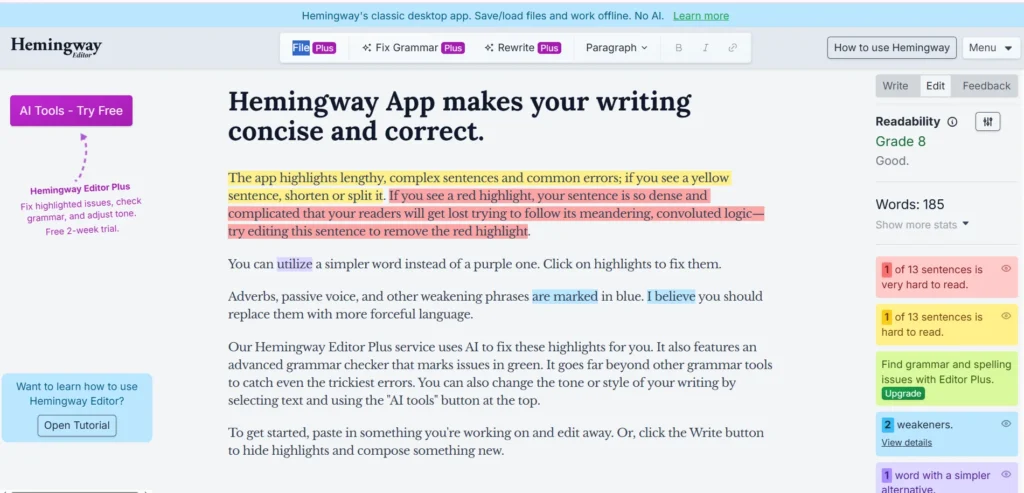
Hemingway Editor is designed to make your writing more concise and readable.
It highlights overly complex sentences, passive voice, and adverb overuse—helping you simplify your language while improving comprehension.
Blogs with better readability scores perform better on mobile, keep users engaged longer, and cater to broader audiences.
Hemingway is especially helpful for ensuring your blog writing format remains clean, scannable, and digestible.
3. Surfer SEO
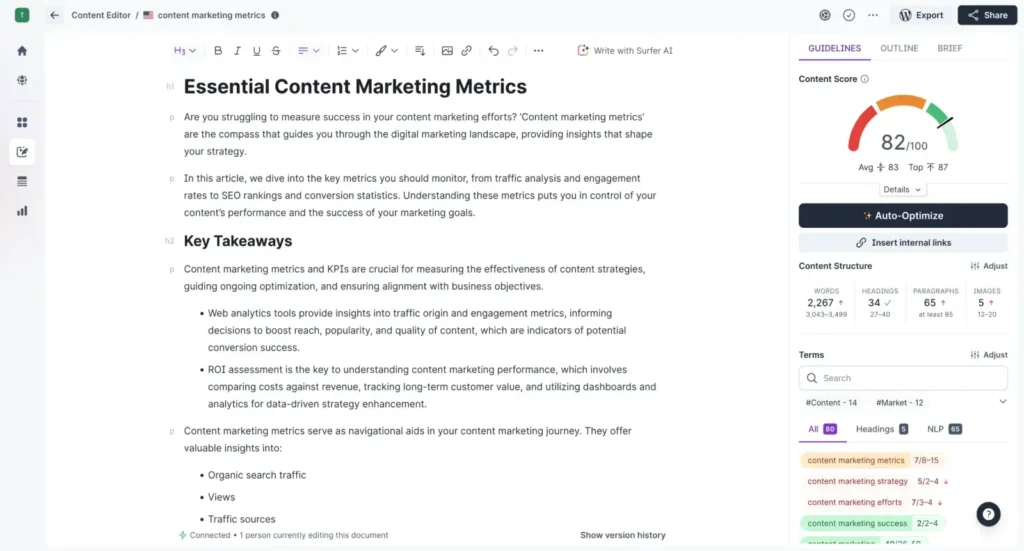
Surfer SEO is a data-driven tool that helps bloggers write SEO-optimized content based on Google’s current ranking.
It provides keyword suggestions, ideal content length, heading structure, and NLP-driven phrases to improve your post’s competitiveness.
By using Surfer SEO while drafting or editing, you can align your blog more closely with user intent, boosting the chances of ranking higher for short- and long-tail queries.
4. Canva
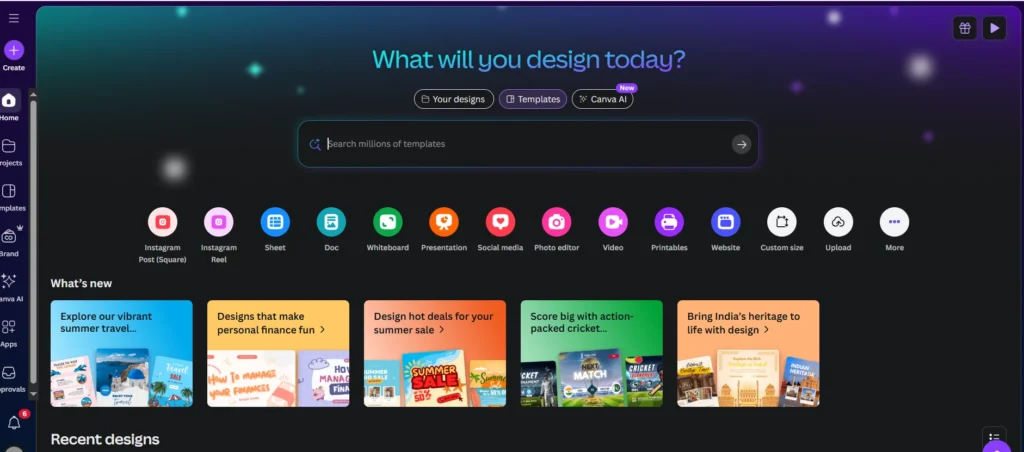
Strong visuals enhance your content’s engagement.
Canva allows bloggers to create custom graphics, blog banners, featured images, infographics, and social media visuals—without requiring advanced design skills.
Integrating visuals makes your blog posts more interactive and can improve time on the page while supporting your overall content marketing efforts.
Every blog should be visually appealing and informative, especially when repurposing content for social channels.
5. Notion
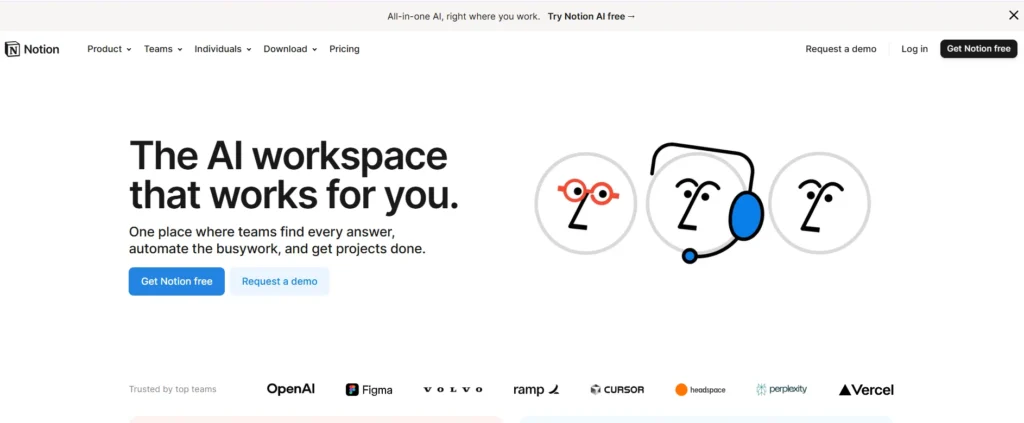
The notion is a powerful productivity tool that helps bloggers manage content planning, topic research, editorial calendars, and checklists in one centralized space.
Using Notion to map out your posts ensures content consistency and alignment with your long-term goals.
It’s particularly helpful when collaborating with a team or managing multiple blogs under a structured schedule.
6. Google Docs
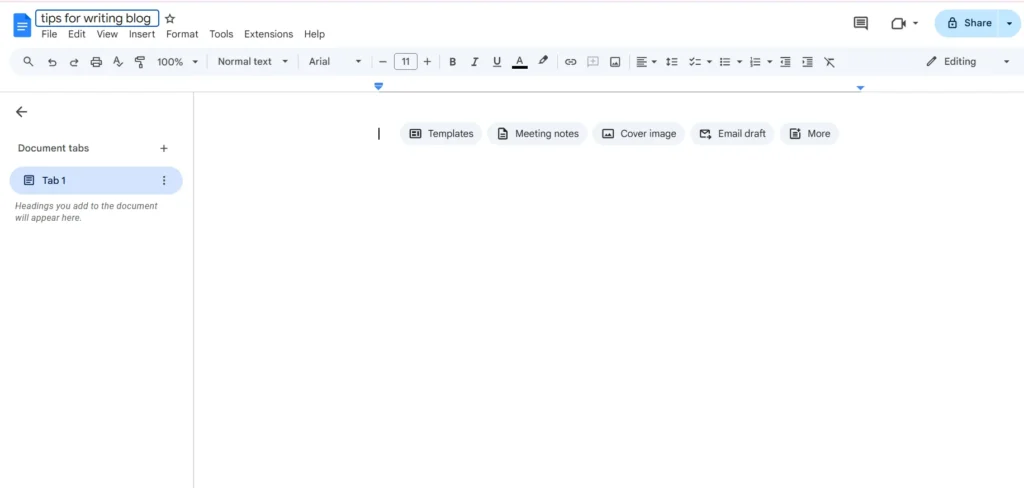
Google Docs remains one of the most versatile and accessible tools for blog writing. It lets you draft, comment, edit, and share blog posts from anywhere.
Its collaboration features make it ideal for teams or bloggers working with editors, content managers, or guest writers.
Its built-in spelling and grammar suggestions complement tools like Grammarly and Hemingway.
Advanced Tips for Experienced Bloggers

Once you’ve mastered the basics of blog writing and content structure, the next step is to elevate your strategy for long-term performance and domain authority.
Experienced bloggers aiming for sustained growth, competitive rankings, and increased topical relevance must look beyond just writing well structured posts they need to understand and implement advanced SEO frameworks that deliver scalable results.
This section covers advanced techniques that align with modern content standards, improve organic visibility, and position your blog as an authoritative source in your niche.
1. Implement Schema to Enhance SERP Appearance
Schema markup adds structured data to your blog post, helping search engines understand the context and type of content you’re publishing.
This often leads to rich results, such as FAQs, breadcrumbs, and article enhancements, which improve click-through rates and visibility on the search engine results page (SERP).
Common schema types bloggers should consider include:
- Article or BlogPosting schema for general posts
- FAQPage schema for FAQ sections
- HowTo schema for step-by-step guides
Adding schema isn’t about keyword ranking directly—it’s about making your content more accessible and appealing to search engines and users.
Use tools like Google’s Structured Data Markup Helper to implement and validate schema properly.
2. Build Topical Authority Through Strategic Internal Linking
As your content library grows, creating a web of internal links between related articles helps establish your blog as a credible source within a specific niche.
This topical authority signals to search engines that your site covers a subject comprehensively.
Best practices for internal linking include:
- Linking older posts to new, relevant content
- Using keyword-rich anchor text that matches user intent
- Creating content clusters around core themes (e.g., blogging, SEO, content strategy)
Search engines value well-linked content ecosystems because they improve crawlability, reduce bounce rates, and keep readers engaged longer.
3. Structure Long-Form Content for Better UX and SEO
Publishing long-form content allows you to rank for more keywords and answer multiple user questions in a single post.
But length alone doesn’t guarantee performance—it must be well-structured and purposeful.
To structure long-form content effectively:
- Begin with a detailed table of contents
- Use clear subheadings (H2/H3) to define each topic section
- Include jump links for easier navigation
- Break content into digestible segments with visuals or summaries.
This improves user experience, reduces friction, and enhances engagement, signaling content depth to search engines.
4. Apply the Pillar & Cluster Strategy for Scalable SEO Growth
A pillar and cluster model organizes your content around core topics (pillars) and subtopics (clusters), creating a linked ecosystem that boosts visibility and user experience.
For example:
- Pillar: How to Start a Blog
- Cluster topics: Choosing a Blogging Platform, How to Pick a Niche, Writing Your First Blog Post, Monetizing Your Blog
Each cluster post links back to the main pillar page and vice versa. This architecture helps:
- Improve internal linking naturally.
- Signal thematic depth and topical relevance.
- Capture a broader range of search queries related to your niche.
Tools like Notion, Trello, or content mapping templates can help manage this approach at scale.
Final Thoughts
Creating impactful blog content isn’t about being perfect from the start.
It’s about developing the right habits, leveraging the right tools, and writing with purpose and reader intent.
From choosing your niche and structuring posts to editing thoroughly and promoting smartly, every part of the process contributes to your blog’s growth.
If you’re a beginner, remember that consistent practice, strategic planning, and SEO understanding lead to long-term progress.
Even one well-structured post a week can build momentum over time.
Have questions or want to share your experience? Comment below or subscribe to stay updated with more expert blog writing tips delivered regularly.
FAQs About Tips for Blog Writing.
What is the 80/20 rule for blogging?
The 80/20 rule suggests spending 20% of your time writing your blog content and 80% promoting it. The logic is simple: even the best-written post won’t deliver results if no one reads it. Sharing your post via social media, email newsletters, SEO, and outreach gives it visibility.
How to Write a blog for beginners?
Start by choosing a niche, understanding your audience, and outlining your content before writing. Use simple language, include helpful visuals, and structure your post with headers and bullet points for readability. Don’t forget to include a clear call to action at the end.
How do I get good at writing blogs?
Consistency and feedback are key. The more you write and refine, the more your style and structure will improve. Use tools like Grammarly or Hemingway, analyze top blogs in your niche, and focus on aligning each post with user intent.
What are the 10 steps to Write a blog post?
While each blogger may adapt their process, the typical steps include:
- Select a niche topic
- Research your audience and keywords.
- Outline your content
- Write a compelling headline.
- Draft your introduction
- Write the body with structure.
- Include visuals and formatting.
- Add internal/external links.
- Edit and proofread
- Publish and promote
How can I choose the right blog post type for my content goals?
Match your blog post format to your objective. Use how-to posts for tutorials, resource listicles, opinion pieces for brand positioning, and guides for comprehensive coverage. Always align the format with user intent and your content strategy.
What are the best tools to improve my grammar and style in blogging?
Top tools include:
- Grammarly for grammar and tone
- Hemingway Editor for readability
- Quillbot for rewriting or refining sentences
- Google Docs for collaboration and live editing
How do I create effective outlines that save me time during writing?
Start with a content brief. Identify your main headers, subtopics, and CTA. Use keyword data and People. Also, Ask questions to frame your outline. Outlining ensures logical flow and helps avoid writer’s block.
Why is research crucial even for informal blog posts, and how can it be done efficiently?
The research adds credibility and depth. Use Google Search, Reddit, Quora, and keyword tools like Ubersuggest or Ahrefs to gather facts, queries, and perspectives. Supporting your writing with reliable sources enhances topic authority.
How can I infuse my personality into my blog to stand out digitally?
Write as you speak. Use storytelling, metaphors, humor, and personal examples to express your unique voice. Avoid sounding generic or robotic. A consistent tone helps build brand loyalty and connection with your audience.
Also Read:
- How Blog Earn Money 2025 – The Ultimate Guide (A-Z)
- How to Start a Blog on Instagram 2025: A Step-by-Step Guide
- How to Start a Lifestyle Blog and Make Money in 2025
